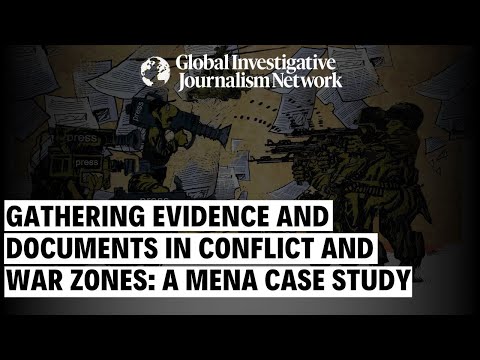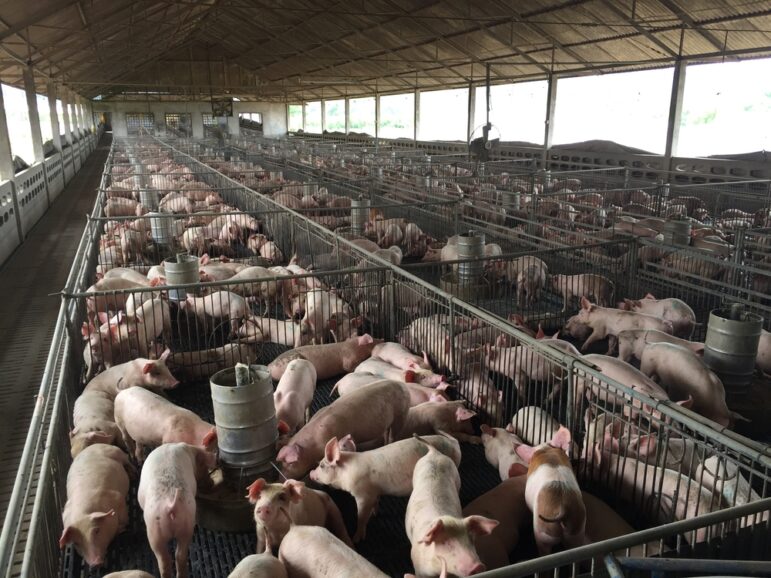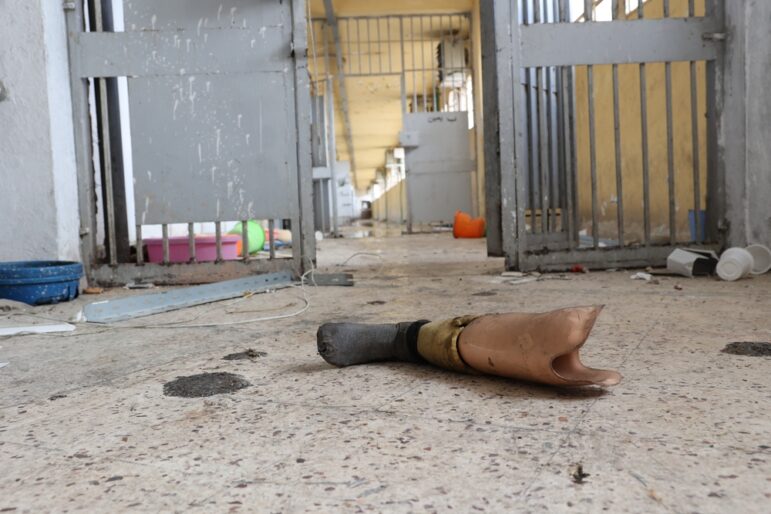

Illustration: Marcelle Louw for GIJN
Chapter Guide Resource
Latest Tools to Help Reporters Investigate Methane Emissions
Chapter Guide Resource
Guide to Investigating Methane — A Key to Fighting Climate Change (Short Version)
Chapter Guide Resource
Climate Change Reporting Guide: Methane – Introduction / TOC
Chapter Guide Resource
Climate Change Reporting Guide: Methane — Interrogating the Data
Chapter Guide Resource
Climate Change Reporting Guide: Methane — Investigating Leaks and Emissions
Chapter Guide Resource
Climate Change Reporting Guide: Methane — Investigating Corporations — and Broken Promises
Chapter Guide Resource
Climate Change Reporting Guide: Methane — Holding Countries Accountable
Chapter Guide Resource
New Sources Emerge for Tracking Methane Emissions by Satellites
Chapter Guide Resource
Video: How to Investigate Methane Emissions
In advance of the UN Climate Change Conference (COP26) in Glasgow, Scotland in November 2021, many countries made promises to reduce their methane emissions.
For example, Nigeria committed to ending emissions from gas flaring by 2030 in its 2021 climate plan. News coverage of these announcements, like this Climate Change News article, pushed back on the country’s promises, however, and included comments from skeptics urging specific actions, such as a mandate for frequent leak detection and repair surveys.
Information on similar emissions commitments can be found in the UN’s Nationally Determined Contribution (NDCs) reports submitted by individual national governments. The NDCs are published on the UN’s NDC Registry, along with a description of the process. Reporters can sign up for an RSS feed of the latest filings here. The UNFCCC also prepares NDC synthesis reports. (See the October 2021 version here.) And the group Climate Watch features an Explore NDC Module with a keyword search function. The database includes each country’s document. The same group keeps a running list of countries that have committed to a net-zero target.
Some countries disclose national emissions data in these reports. Among them is Israel, whose estimated emissions levels were found to be higher than the global average, according to The Times of Israel.
An Explore NDC Module from Climate Watch has a keyword search function. The database includes each country’s document.
Ninety percent of the new NDCs specify methane as a target pollutant for mitigation, according to a preliminary tally from the Climate and Clean Air Coalition, shared with GIJN.
However, “current NDCs cover only about one third of the methane reduction required to be consistent with a 2°C temperature goal, and only about 23 per cent of what is needed for the 1.5°C goal,” according to the Emissions Gap Report 2021 from the UN Environmental Programme.
As pointed out before, national figures may be inaccurate. Emissions of methane from fossil fuel operations are 70% higher than national governments are reporting, according to the 2022 edition of the Global Methane Tracker that the IEA released Feb. 23, 2022.
Global Commitments — Vague Plans
The 156 signatories to the Global Methane Pledge have agreed to a global goal of a 30% reduction from 2020 levels by 2030. However, signing the pledge does not bind individual countries to specific goals. As a result, skeptical coverage of the pledge noted there is “little transparency or detail on how the 30% reduction is meant to be achieved.”
The signatories, which include major nations like Indonesia, Canada, Brazil, the UK, and the US represent nearly 50% of global anthropogenic methane emissions and over two thirds of global GDP. Notable absences from the list include Australia, China, India, and Russia – although China later agreed to a meeting with the US “in the first half of 2022 to focus on the specifics of enhancing measurement and mitigation of methane,” according to Carbon Brief.
What to Investigate
The top-line claim to probe: Will the pledges made by individual governments on the global stage be kept?
Areas of inquiry include:
- How and why were national reduction levels chosen?
- How are they are justified?
- How will the goals be accomplished?
- How will progress be verified?
National circumstances will vary as will potential mitigation strategies. The best sources for critiques of the plans will likely be local and regional environmental groups, scientists, the business community, and political actors. And in many places around the world, the debates are well underway.
The European Commission has developed a methane strategy. The EC is proposing laws to require companies to monitor methane emissions and report and repair leaks, and is drafting legislation. (See this Reuters report from November 2021.) Similarly, the US Environmental Protection Agency has proposed controversial new reporting requirements for the oil and gas industry and Congress is considering fees proposed by the Biden administration. (Both are very much moving targets.) The challenges facing China’s methane emissions strategy were summarized in this Sixth Tone story in the wake of COP26.
Identifying Methodological Challenges
Because the measurement of the emissions is a critical starting point, reporters could scrutinize the methodology being used to estimate the emissions. (For more on this, see chapter one of this guide.) They could also probe the reasons behind countries’ methodological choices, possibly related to cost or capacity.
National inventories usually understate the problem, researchers have found. The path forward may require better monitoring, which raises questions of how that will be achieved.
Reporters should ascertain which one of the three tiers of methodology (as defined by the UN) is being used. “If a country goes for Tier 1, is it because there’s not enough local (country-level) data to calculate, or internal capacity (within government) to obtain and apply, more specific emission factors that would in turn allow the application of more sophisticated methods?” asked Martin Dietrich Brauch, who co-authored a July 2011 report that found, not surprisingly, the use of different tiers led “to widely diverging results.” He is a member of the Coalition on Materials Emissions Transparency (COMET), an initiative to develop a cohesive greenhouse gas calculation framework.
Finding national and regional sources within the scientific community may prove useful. Some international groups that focus on methane emissions might offer suggestions. For example, the Clean Air Task Force developed an open source Country Methane Abatement Tool (CoMAT) that “lets countries estimate how much methane pollution they can reduce from their oil and gas industries even when they have limited information about the industry and its current emissions.”
Requesting access to national data may also prove useful. Getting that level of detailed information was the key to Unearthed’s 2021 investigative story: Revealed: The North Sea oil giants fueling climate change with millions of tonnes in preventable emissions. Reporter Lawrence Carter, who works for Unearthed, a journalism arm of Greenpeace UK, obtained data about corporate greenhouse gas emissions from the National Atmospheric Emissions Inventory (NAEI), a British government agency, through an Environmental Information Regulations request.
For an example of a follow-up story, read Hot air: Mexico lags behind in fight against methane, despite pledges in Diálogo Chino. Also, How will China control its methane emissions? is a comprehensive overview of China’s efforts published in its English edition, China Dialogue.
Other Government Actors to Scrutinize
Sub-national jurisdictions, such as provinces and cities, also are making net zero commitments. Both public and private entities may be involved in these pledges. Reporting on public facilities may be aided by the use of public reports and by making FOI requests for more detailed data. Local challenges regarding methane mainly pertain to landfills, incineration operations, and wastewater treatment facilities. (Here’s a handy explanation from Waste 360 of the techniques for measuring landfill gasses.)
“In particular, poorly regulated landfills in fast-growing tropical megacities need attention,” wrote E.G. Nisbit and colleagues in a 2020 geophysics journal article on methane issues. Dhaka’s Matuail landfill, for example, emits four metric tons of methane per hour, according to an April 2021 report by Canada-based emission-tracking company GHGSat. Using public data, reporter MacKenzie Elmer wrote an exposé on methane emissions from the local city landfill for the Voice of San Diego. In November 2021, the European Space Agency and GHGSat disclosed methane leaks from a Madrid landfill, which AP covered, that brought denials from city officials.
On the international stage, multilateral development organizations such as the World Bank are being urged to make loans with climate change in mind. Whether these efforts come to fruition might be revealed through enterprise stories on national projects.
But the challenge will remain for reporters who are trying to track this global problem and convey the scale of it to readers. When The New York Times won the National Press Club’s Innovative Storytelling Award in 2020 for its groundbreaking use of infrared cameras to expose leaks, the judges highlighted the difficulty of covering this part of the climate crisis.

A New York Times exposé that used infrared cameras revealing methane leaks won the National Press Club’s Innovative Storytelling Award in 2020. Image: Screenshot
“There is no question that methane gas emissions are a huge problem, accelerating climate change at a critical moment for our planet,” explained judge Rafael Lorente, a former reporter who is now director of the University of Maryland’s Master’s Program in journalism. “The journalists’ problem is telling that story in a compelling way.”
















